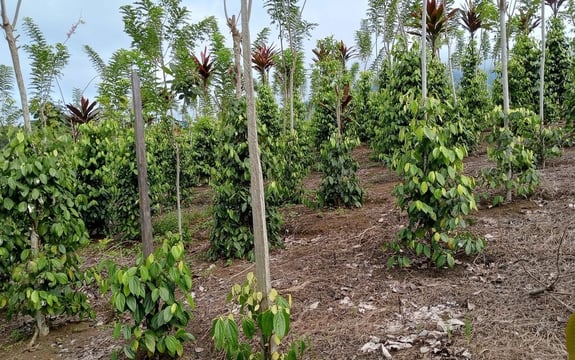Efforts to Strengthen Geographical Indication Certification for East Kalimantan’s Pepper
3/27/2024


East Kalimantan, known as a major pepper-producing region in Indonesia, is pushing for the enhancement of pepper competitiveness through the implementation of Geographical Indication (GI) certification. This initiative aims to maintain product quality, ensure price stability, and protect and preserve the unique characteristics of East Kalimantan’s pepper.
According to Ujang Rachmad, Head of the East Kalimantan Plantation Office, the GI certification is part of a strategy for sustainable plantation development in the region. “This certification is part of our strategy to prioritize the development of non-palm oil commodities, including pepper, as well as other commodities such as rubber and cocoa,” Rachmad stated on Wednesday (July 27, 2021).
Geographical Indication certification serves as a marker that indicates the origin of a product. Geographic factors, whether natural or human-induced, impart distinctive characteristics and quality to the product. The implementation of this certification is expected to improve the efficiency of the pepper supply chain by directly connecting farmers with buyers, reducing reliance on unstandardized middlemen.
Rachmad explained that GI certification could also address issues related to low prices, which are often caused by price manipulation by certain parties. “The price of pepper on the international market is not as low as the price received by farmers here. We need to investigate the causes of these low prices, whether they are due to supply chain issues or price manipulation at the farmer level,” he said.
Additionally, GI certification is hoped to stimulate increased productivity among pepper farmers, who have been experiencing a significant decline. According to data from the East Kalimantan Plantation Office, the area and production of pepper plants have decreased since 2011.
In 2009, the area of pepper plantations in East Kalimantan was 14,900 hectares with a production of 11,121 tons. By 2020, the area had reduced to 8,247 hectares with a production of 3,760 tons. This decline is attributed to factors such as aging or damaged plants, low resistance to pests and diseases, and land conversion to mining or oil palm plantations.
With the introduction of Geographical Indication certification, it is hoped that East Kalimantan’s unique pepper will gain more recognition and acceptance in the global market, providing greater economic benefits to farmers and local communities. This initiative is part of the broader effort to strengthen the agricultural sector in East Kalimantan and ensure the sustainability of pepper production in the future.






